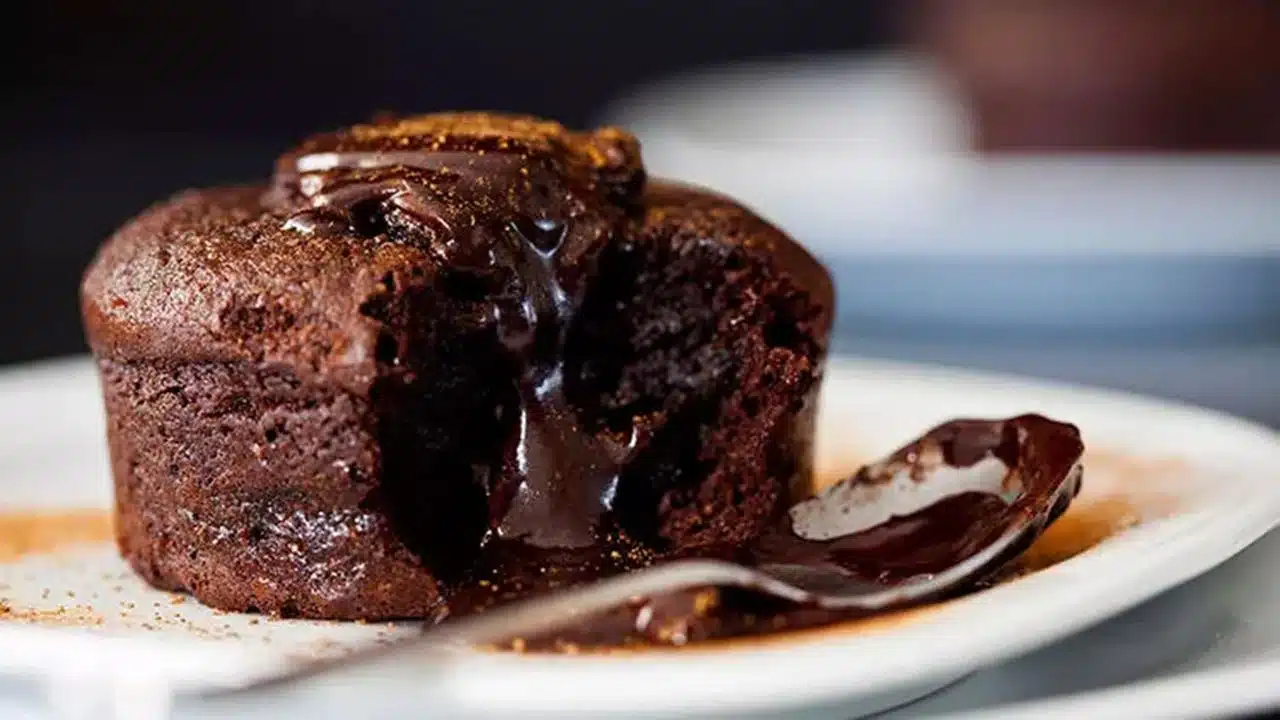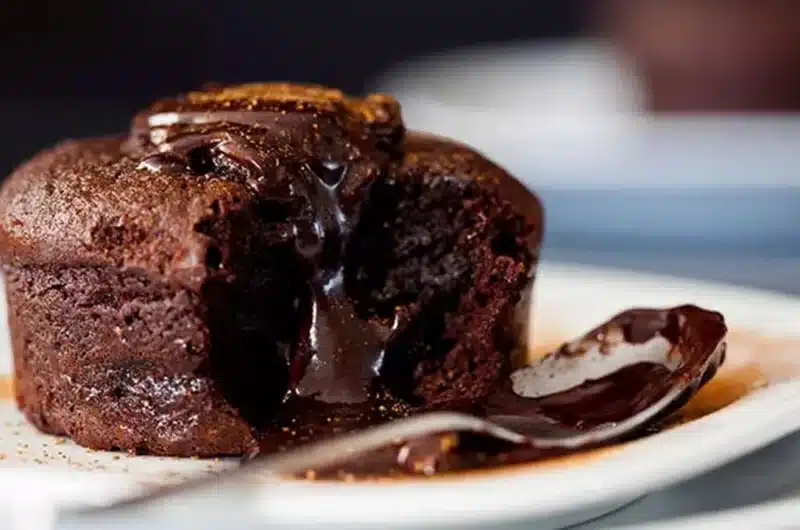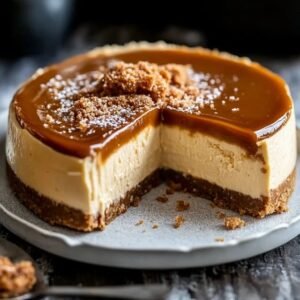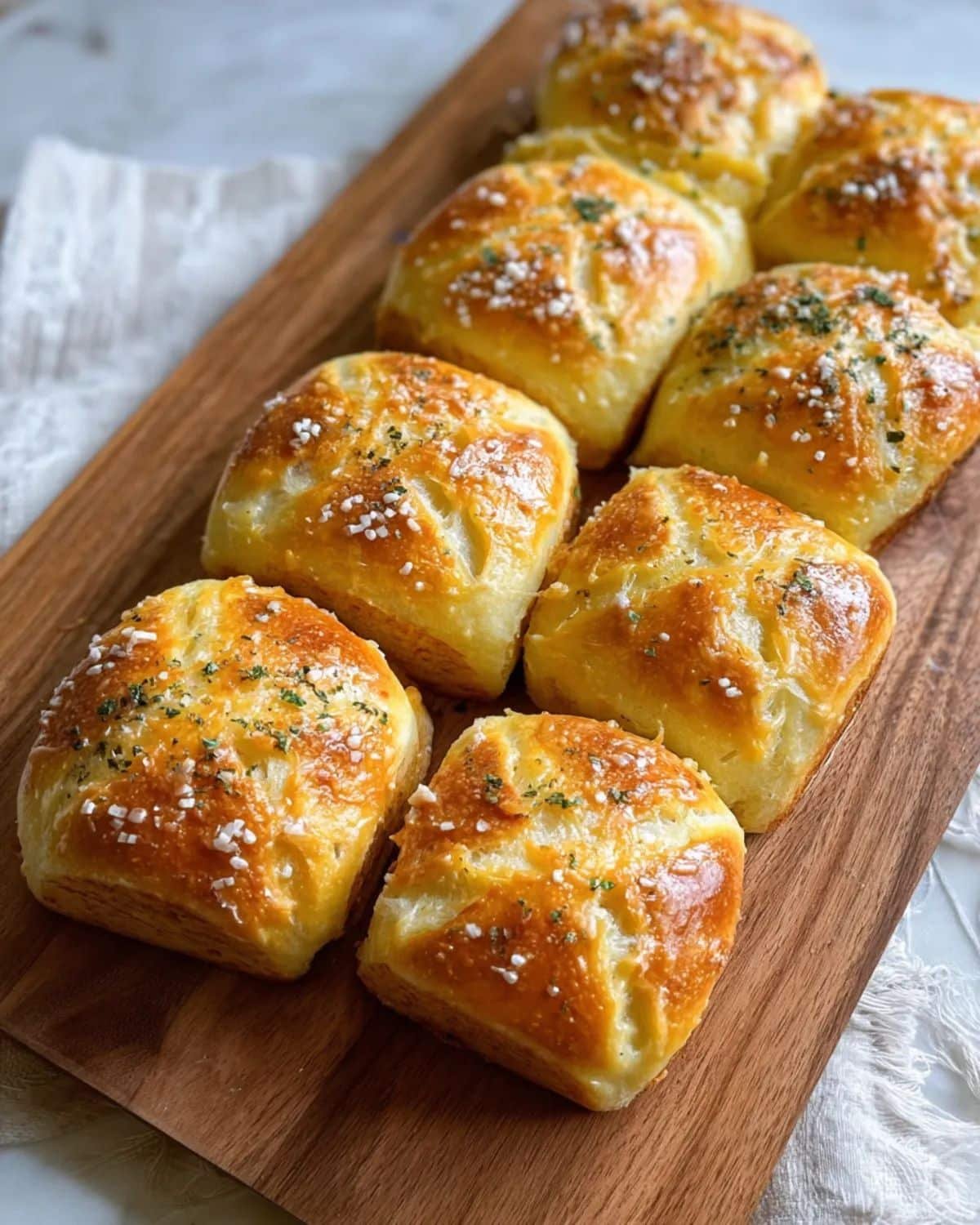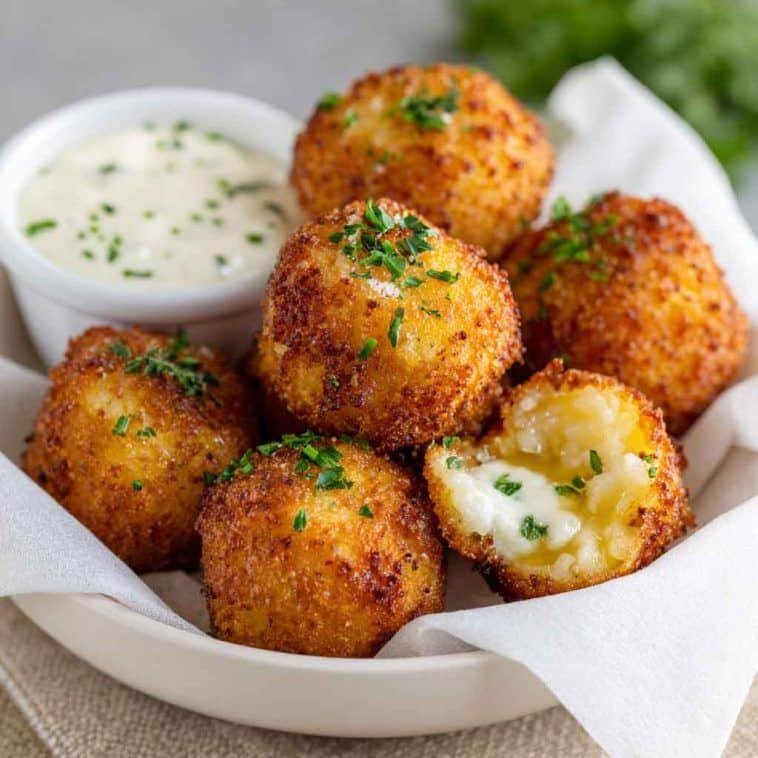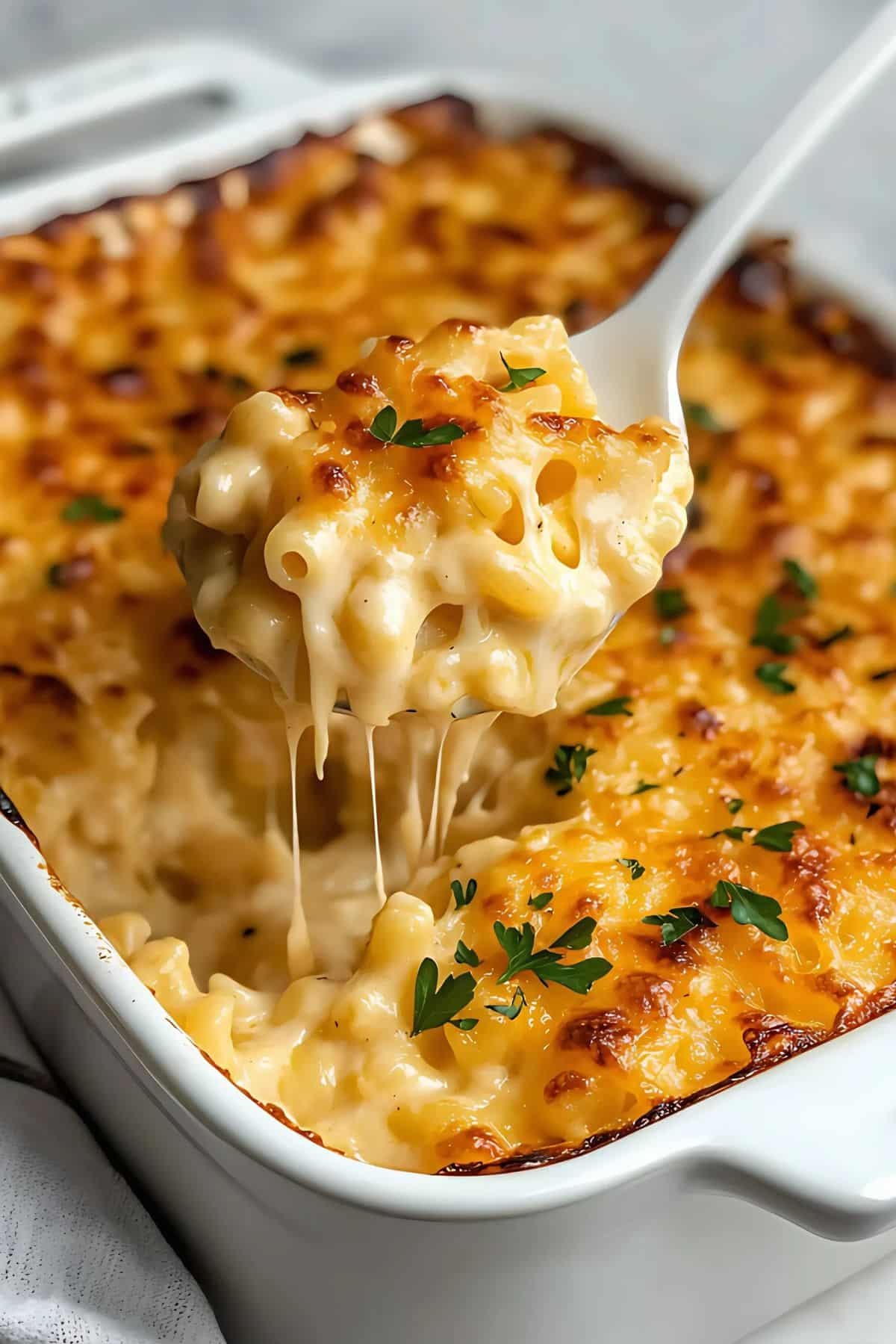Making a delicious chocolate souffle is a skill that has enthralled culinary fans for generations. This delectable delicacy, originally from France, mixes the richness of dark chocolate with the ethereal lightness of whipped egg whites, resulting in a treat that is both luxurious and perfectly balanced. The key to making a great chocolate souffle is using high-quality ingredients and following specific instructions. From melting the chocolate to whipping the egg whites to the perfect consistency, each step helps to create a dessert that will impress even the most discerning palette. Chocolate soufflé is a timeless classic that never disappoints, whether served as a magnificent finish to a gourmet meal or as a stand-alone dessert. Dive into the realm of chocolate soufflé and experience the delight of crafting a masterpiece in your kitchen.
Table of Contents
ToggleWhy Is Chocolate Souffle So Amazing?
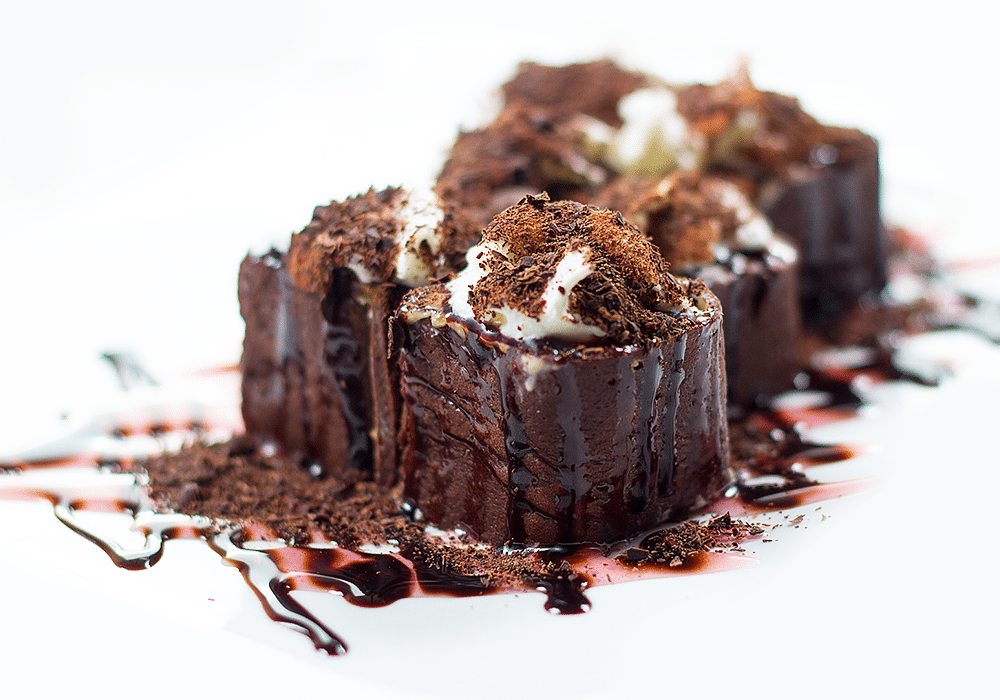
Chocolate soufflé is particularly outstanding due to its enticing combination of rich, velvety chocolate flavor and ethereal, light texture. The mention of its name conjures up ideas of luxury and gluttony. What distinguishes it is its capacity to transform simple components like chocolate, eggs, and sugar into a masterpiece that tantalizes the taste buds and delights the senses. The enchantment begins as it rises elegantly in the oven, forming a tall, majestic crown that calls for promises of pure delight. Chocolate soufflé defies expectations with each spoonful, providing a symphony of flavors and textures that leave an indelible impression.
Cooking Time of Chocolate Souffle
The cooking time for a chocolate souffle varies according to the recipe and the oven temperature. A chocolate soufflé is usually baked in a preheated oven at 375°F (190°C) for about 12 to 15 minutes. However, it is critical to regularly monitor the souffle during baking because oven temperatures and individual oven performance can vary. The souffle is finished when it has risen and set on the edges but still moves slightly in the center. Overbaking can cause the souffle to collapse, so remove it from the oven as soon as it is fully cooked.
Nutritional Facts
Chocolate soufflé is a popular dessert, however, the nutritional value varies based on the recipe and components used. Here’s a rough breakdown of the nutritional data for an average chocolate souffle:
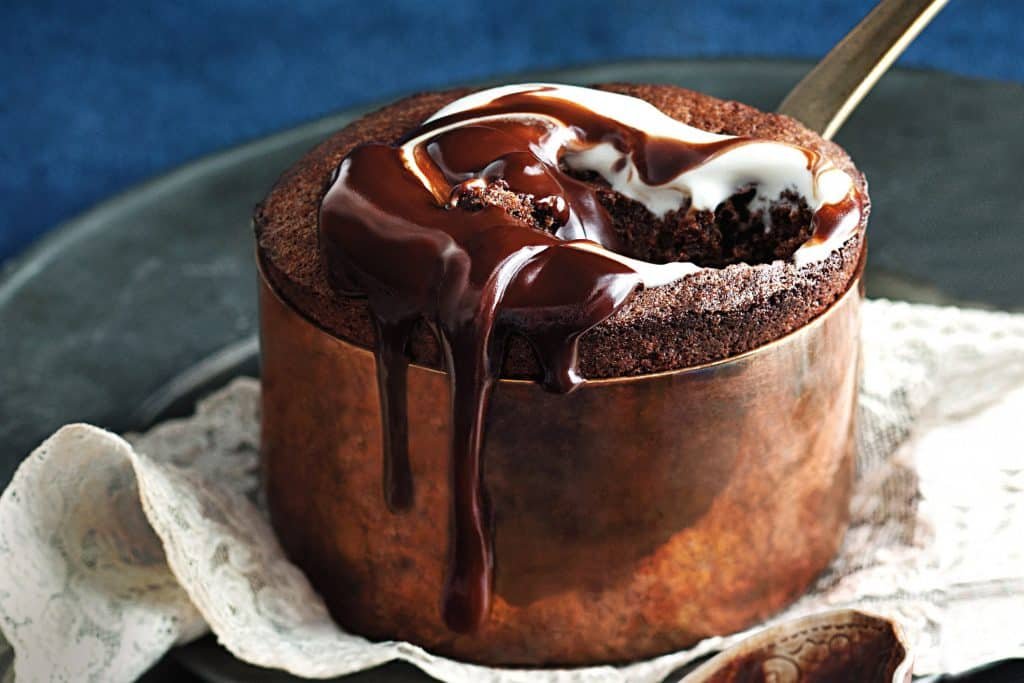
- Serving size: 1 individual soufflé (about 100g).
- Calories: around 250-300 kcal
- Total Fat: About 15-20g
- Saturated fat: around 8-12g.
- Cholesterol: About 100-150 mg
- Sodium: Around 100-150 mg
- Carbohydrates: about 20-25g
- Dietary Fiber: Around 1-2g
- Sugars: About 15-20 g
- Protein: around 6-8g.
Keep in mind that these values are estimates and may vary depending on factors such as serving size and exact components used in the dish. Furthermore, homemade soufflés may have distinct nutritional profiles compared to commercially prepared ones.
Ingredients
When making a wonderful chocolate soufflé, it’s critical to have the proper components in the right amounts to produce a perfect finish. Here’s everything you’ll need:
- Dark Chocolate: Choose semi-sweet or bittersweet baking chocolate, about 4 ounces chopped into small pieces.
- Butter: Use roughly 2 tablespoons of unsalted butter to grease the ramekins.
- Granulated sugar: ⅓ cup + additional for dusting the ramekins.
- All-Purpose Flour: 2 tablespoons for making the foundation of the soufflé.
- Milk: Add ¾ cup of milk to the chocolate and flour mixture.
- Eggs: Separate the yolks and whites; you’ll need four large eggs total.
- Vanilla extract: 1 teaspoon, to enhance the flavour of the soufflé.
- Salt: a pinch to counteract the sweetness of the chocolate.
How to Make Chocolate Souffle?
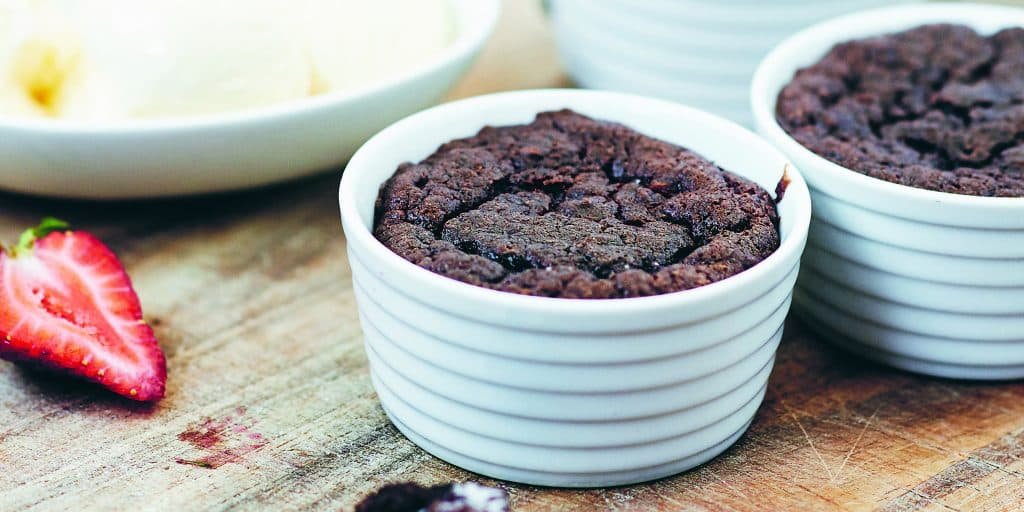
Preparation
Preheat the Oven: Preheat the oven to the specified temperature, which is normally approximately 375°F (190°C).
Prepare the Ramekins: Butter the insides of the ramekins generously, then sprinkle with sugar. This allows the souffle to rise evenly and prevents it from sticking.
Melt chocolate with butter: Melt the chocolate and butter in a heatproof bowl over a pot of simmering water or in the microwave, stirring regularly, until smooth. Allow it to cool somewhat.
Separate eggs: Separate the egg yolks from the whites, being careful not to get any yolks mixed in with the whites, since this can prevent them from beating correctly.
Mix egg yolks: Whisk the egg yolks with sugar until pale and slightly thickened. Add any flavorings at this point.
Add Chocolate Mixture: Pour the melted chocolate mixture into the egg yolks and whisk until completely blended.
Fold in Flour: Gently fold in sifted flour until just blended. Be careful not to overmix, as this can deflate the souffle.
Whip Egg Whites: In a clean, dry dish, beat the egg whites until stiff peaks form. This will help the souffle rise properly.
Combine Batter: Gently incorporate the whipped egg whites into the chocolate mixture in two or three additions, taking care not to deflate it too much.
Fill Ramekins: Divide the soufflé batter evenly between the prepared ramekins, filling them nearly to the top.
Bake: Place the filled ramekins on a baking tray and move them to the preheated oven. Bake for about 12–15 minutes, or until the soufflés are puffed up and set on the edges but still slightly jiggly in the center.
Note: Make a tiny depression around the top rim of the batter with a knife, icing spatula, or your thumb. This technique causes the souffle to rise upward rather than spread outward when baking.
Serve immediately: Remove the souffle from the oven and serve immediately, sprinkled with powdered sugar or cocoa powder if desired. Enjoy your wonderful chocolate souffle!
Chocolate Souffle Topping
A chocolate souffle can be enhanced in flavor and presentation with a variety of delicious toppings. A coating of powdered sugar is a classic option for adding a hint of sweetness and a visually pleasing finish. Alternatively, a drizzle of warm chocolate sauce can increase the pleasure level by adding an extra layer of chocolatey richness to each bite. To add texture contrast, top the soufflé with a dollop of freshly whipped cream or a scoop of velvety vanilla ice cream, resulting in a lovely interaction between the warm, fluffy soufflé and the chilly, creamy topping. A sprinkle of finely grated dark chocolate or cocoa nibs gives a subtle bitterness and refinement. Experimenting with toppings allows for personalization and creativity, resulting in a unique chocolate soufflé experience.
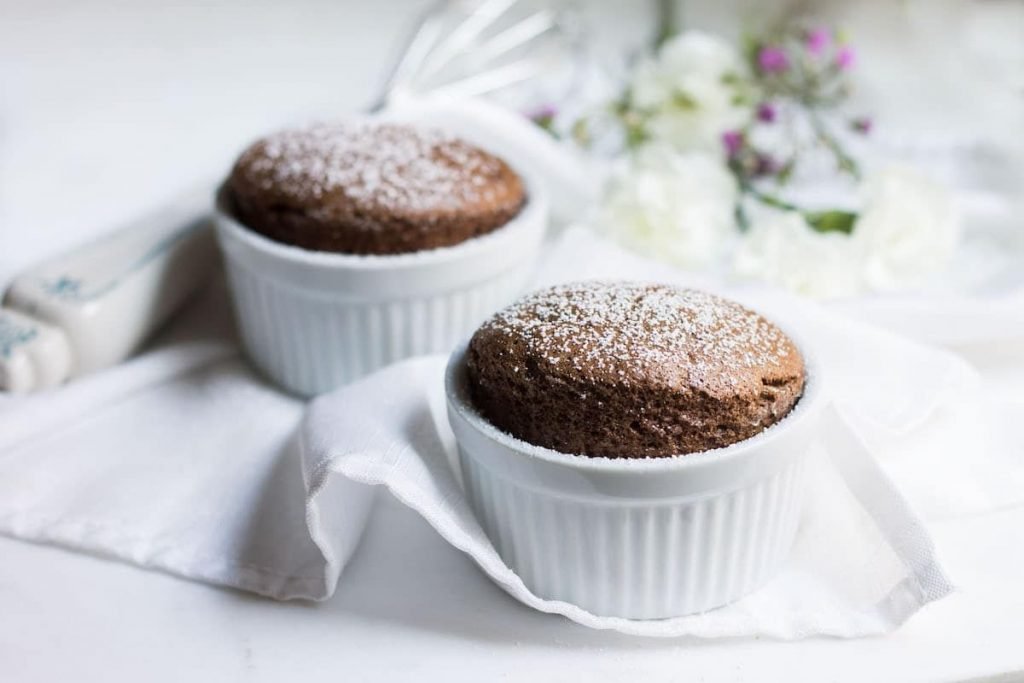
Why Did My Chocolate Soufflé Fall?
Several circumstances can cause a chocolate souffle to collapse. Overmixing the batter might deflate the air added during the whipping process, resulting in a dense texture and collapse during baking. Furthermore, underbaking might make the center fragile and unable to hold the soufflé’s structure. Opening the oven door too frequently or too early might result in significant temperature changes, disturbing the delicate rise of the souffle. Finally, using outdated or inadequately whipped egg whites can cause insufficient volume and stability, resulting in a collapsed soufflé.

Solution
Inadequate whipping of egg whites: Carefully follow step 3 to guarantee correct whipping.
Overmixing and deflating batter: Carefully fold beaten egg whites into the chocolate mixture in three gentle portions, avoiding excessive mixing.
Excessive oven opening and closing: When checking for doneness, keep the oven door closed as much as possible to keep the temperature stable.
Delayed serving: To maintain their height and texture, serve soufflés shortly after baking. Preparing toppings ahead of time allows for quick garnishing. Even if soufflés collapse slightly, they maintain a delicious texture with a crispy top that becomes denser over time.
How To Store Chocolate Soufflés?
Follow these procedures to store chocolate soufflé while maintaining its delicate texture and flavor. Allow the souffle to cool to room temperature after baking. Cover the souffle dish securely with plastic wrap or aluminum foil to keep air out. Refrigerate the soufflé for 1-2 days. Avoid placing heavy items on top of the souffle, since this may cause it to deflate. When ready to dine, gently reheat the soufflé in the oven at a moderate temperature or microwave it until warmed through. Serve immediately for the greatest flavor and texture.
Adding Restaurant Twist
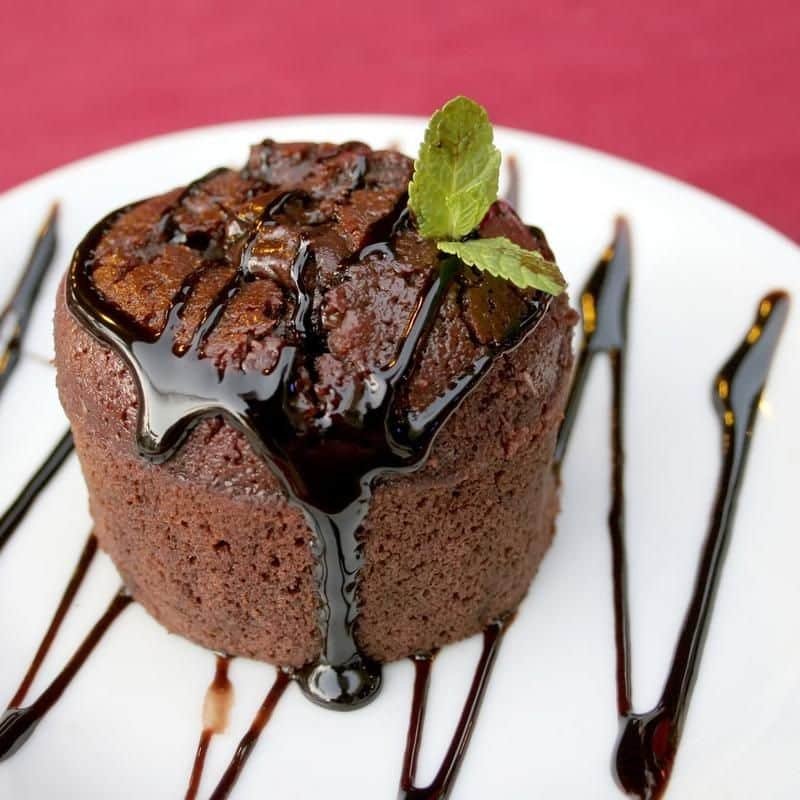
Adding a restaurant flair to a chocolate soufflé may take this traditional dessert to new levels of indulgence and refinement. One method to accomplish this is to use high-quality ingredients and unique flavor combinations. For example, using premium dark chocolate with a higher cocoa level can enhance the soufflé’s rich chocolate flavor. Adding liqueurs like Grand Marnier or Kahlúa can enhance the dessert’s flavor and complexity. Another restaurant-inspired method is to serve the chocolate soufflé with a side of homemade whipped cream or a scoop of artisanal ice cream, which adds a touch of luxury to every bite. Garnishing the soufflé with fresh berries, edible flowers, or a sprinkling of cocoa powder will improve its appearance while also providing contrasting flavors and textures. These inventive ingredients can elevate a simple chocolate souffle into a gourmet dessert fit for any fine dining establishment.
The Shelf Life of Chocolate Souffle
Chocolate soufflé has a relatively short shelf life due to its fragile nature. When carefully stored in an airtight container in the refrigerator, a chocolate souffle can last for 1 to 2 days. However, its texture and flavor may worsen after the first day, as the soufflé loses its airy quality and richness with time. For the greatest taste and texture, eat the chocolate soufflé as soon as possible after baking, preferably within the first day.
FAQS
Can I substitute milk chocolate with dark chocolate?
While we recommend dark chocolate for its rich flavor, you can use milk chocolate for a more subtle flavor. However, you should increase the sugar quantity proportionately.
How do I keep my souffle from clinging to the ramekin?
To make a nonstick coating, thoroughly grease the ramekins with butter and dust with cocoa powder or sugar.
Can I freeze a chocolate souffle?
Although chocolate soufflé tastes best when served fresh, you can freeze it for up to one month. However, thawing and reheating may result in a loss of texture and flavor.
What’s the difference between a chocolate souffle and a chocolate lava cake?
While both desserts include a molten chocolate center, a chocolate soufflé has a lighter, fluffier texture than a lava cake, which has a firmer, more cake-like consistency.
Related Posts:
Final Thought
In the world of desserts, the chocolate soufflé is a symbol of extravagance and sophistication. Its airy texture, rich chocolate flavor, and dramatic rise make it a fan favorite that never fails to impress. Whether served as a soothing delicacy on a chilly winter’s night or as a show-stopping finale to a spectacular dinner party, the chocolate soufflé captivates with its exquisite blend of refinement and simplicity. From its initial rise in the oven to the sumptuous moment of enjoyment at the table, the chocolate soufflé is a timeless beauty that pleases both the palate and the soul.
How To Make Chocolate Souffle?
Course: DessertCuisine: Japanese4
servings25
minutes15
minutes300
kcal45
minutesChocolate soufflé is a classic French dessert renowned for its light and airy texture, combined with the rich and indulgent flavor of chocolate. It is made by folding beaten egg whites into a mixture of melted chocolate, egg yolks, and sugar, then baked until risen and set. The result is a decadent and elegant dessert that delights both the eyes and the palate.
Ingredients
Dark Chocolate: Choose semi-sweet or bittersweet baking chocolate, about 4 ounces chopped into small pieces.
Butter: Use roughly 2 tablespoons of unsalted butter to grease the ramekins.
Granulated sugar: ⅓ cup + additional for dusting the ramekins.
All-Purpose Flour: 2 tablespoons for making the foundation of the soufflé.
Milk: Add ¾ cup of milk to the chocolate and flour mixture.
Eggs: Separate the yolks and whites; you’ll need four large eggs total.
Vanilla extract: 1 teaspoon, to enhance the flavour of the soufflé.
Salt: a pinch to counteract the sweetness of the chocolate.
Directions
- Preheat the oven to 180°C (350°F).
- Melt the chocolate in a heatproof bowl over a pan of simmering water, ensuring the bowl doesn’t touch the water. Once melted, set aside to cool slightly.
- In a clean, dry bowl, whisk the egg whites until stiff peaks form.
- In another bowl, whisk the egg yolks with the caster sugar until pale and creamy.
- Gradually fold the melted chocolate into the egg yolk mixture until well combined.
- Gently fold in a third of the whipped egg whites to lighten the mixture, then carefully fold in the remaining egg whites until no white streaks remain.
- Lightly butter the ramekins and dust with cocoa powder. Pour the soufflé mixture into the prepared ramekins, filling them about three-quarters full.
- Place the ramekins on a baking tray and bake in the preheated oven for 12-15 minutes, or until well risen and set on top.
- Serve immediately, dusted with cocoa powder or icing sugar if desired.
Recipe Video
Notes
- Overbeating Egg Whites: Overbeating the egg whites can cause them to become dry and lose their structure, making it hard for the soufflé to rise properly. Stop once they reach stiff peaks.
Undermixing the Egg Whites: On the other hand, undermixing egg whites with the base can result in a dense soufflé. Gently fold them in until well combined but avoid deflating them.
Opening the Oven Door Early: Opening the oven too early or frequently can cause the soufflé to collapse due to temperature changes. Wait until at least ¾ of the baking time has passed before checking.
Using a Greasy Bowl: Any fat or grease in the bowl when whipping egg whites can prevent them from whipping up properly. Make sure the bowl is clean and dry.
Improper Oven Temperature: Baking at too low or too high a temperature can affect the soufflé’s rise and texture. Follow the recipe’s instructions carefully for the right heat level.
Skipping Buttering and Sugaring the Ramekin: Failing to properly butter and sugar the ramekin will prevent the soufflé from rising evenly and may cause it to stick.
Rushing the Process: Avoid rushing through the steps. Give yourself time to carefully prepare each component to ensure the soufflé rises well and has the right texture.

